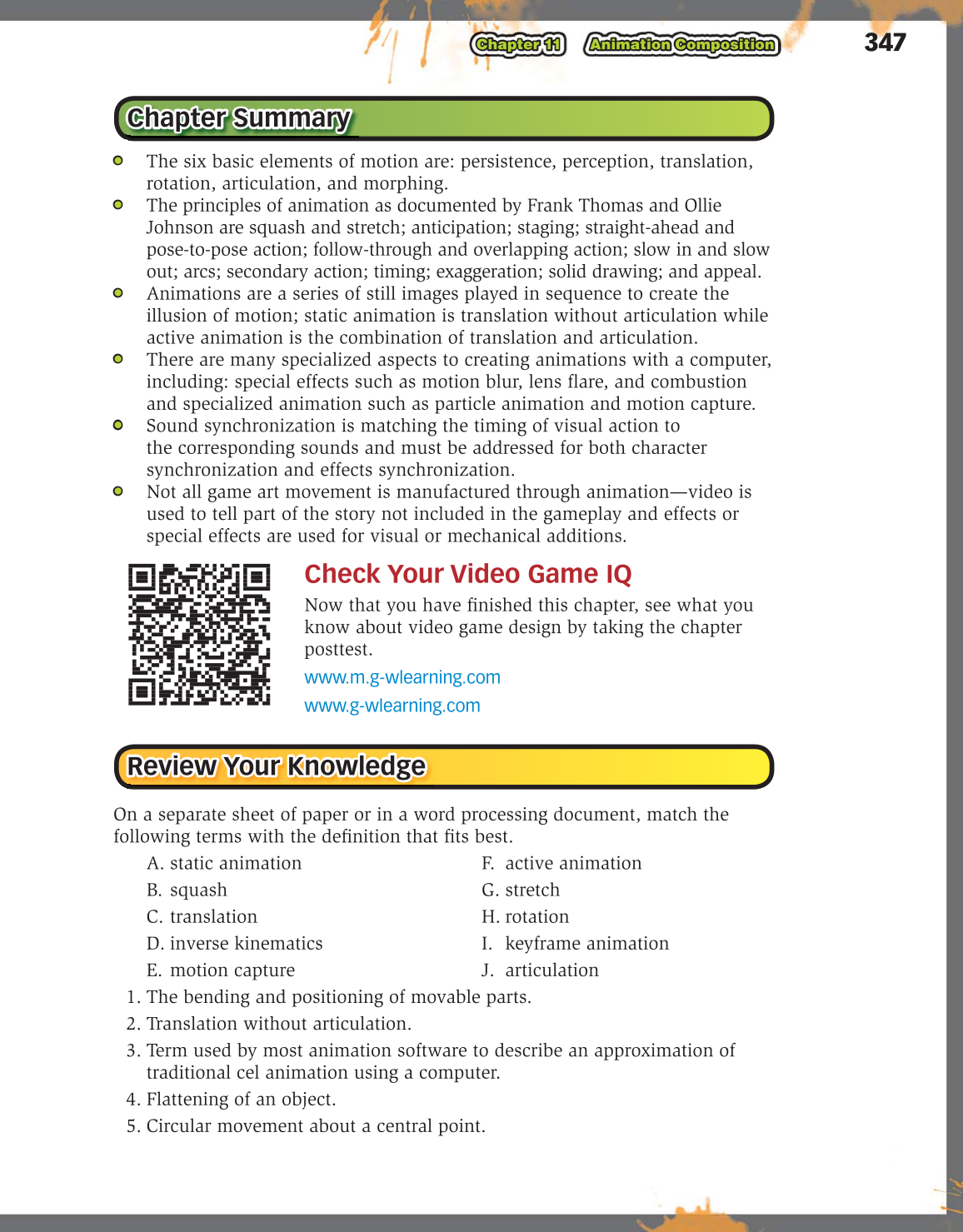347
Chapter 11 Animation Composition
• The six basic elements of motion are: persistence, perception, translation,
rotation, articulation, and morphing.
• The principles of animation as documented by Frank Thomas and Ollie
Johnson are squash and stretch; anticipation; staging; straight-ahead and
pose-to-pose action; follow-through and overlapping action; slow in and slow
out; arcs; secondary action; timing; exaggeration; solid drawing; and appeal.
• Animations are a series of still images played in sequence to create the
illusion of motion; static animation is translation without articulation while
active animation is the combination of translation and articulation.
• There are many specialized aspects to creating animations with a computer,
including: special effects such as motion blur, lens flare, and combustion
and specialized animation such as particle animation and motion capture.
• Sound synchronization is matching the timing of visual action to
the corresponding sounds and must be addressed for both character
synchronization and effects synchronization.
• Not all game art movement is manufactured through animation—video is
used to tell part of the story not included in the gameplay and effects or
special effects are used for visual or mechanical additions.
Check Your Video Game IQ
Now that you have finished this chapter, see what you
know about video game design by taking the chapter
posttest.
www.m.g-wlearning.com
www.g-wlearning.com
On a separate sheet of paper or in a word processing document, match the
following terms with the definition that fits best.
A. static animation
B. squash
C. translation
D. inverse kinematics
E. motion capture
F. active animation
G. stretch
H. rotation
I. keyframe animation
J. articulation
1. The bending and positioning of movable parts.
2. Translation without articulation.
3. Term used by most animation software to describe an approximation of
traditional cel animation using a computer.
4. Flattening of an object.
5. Circular movement about a central point.
Chapter Summary
Review Your Knowledge
